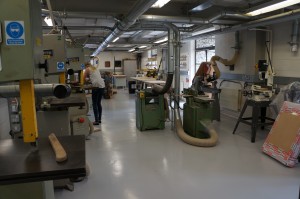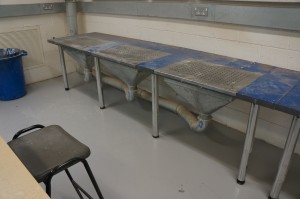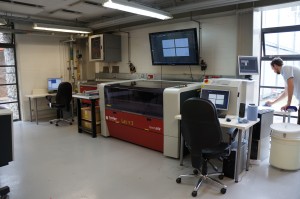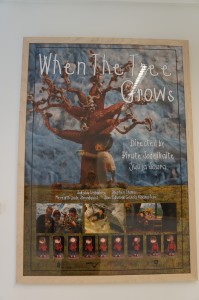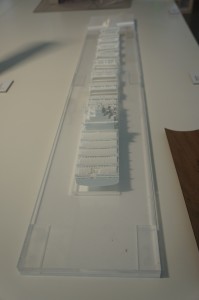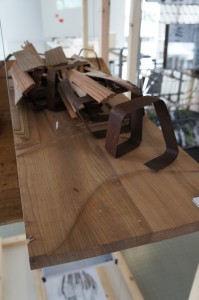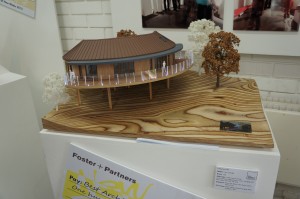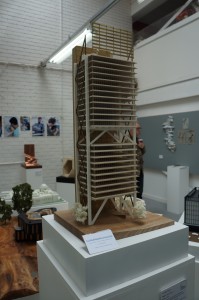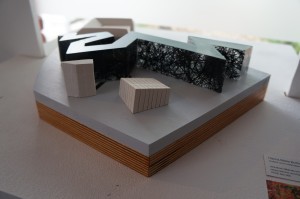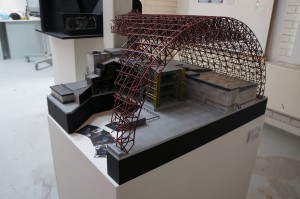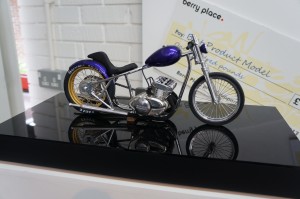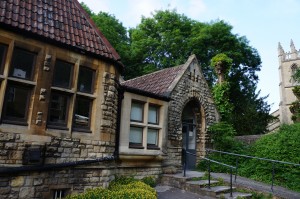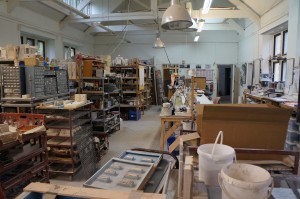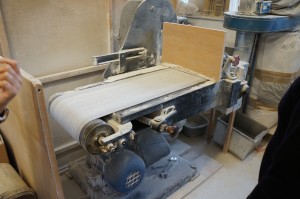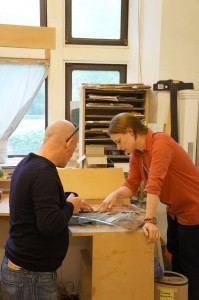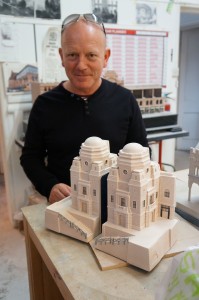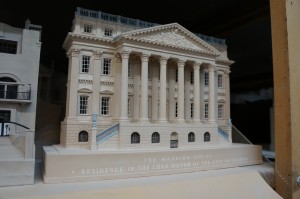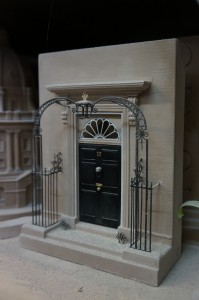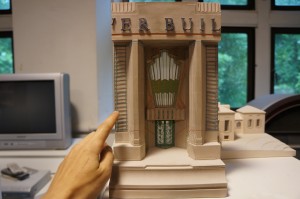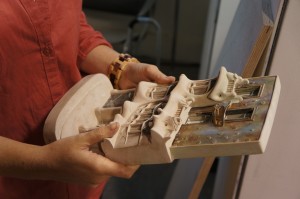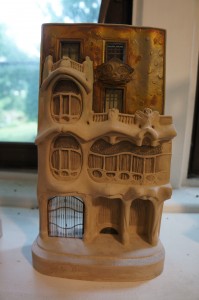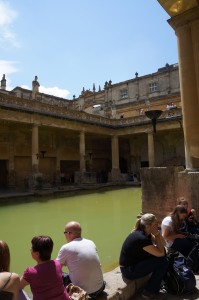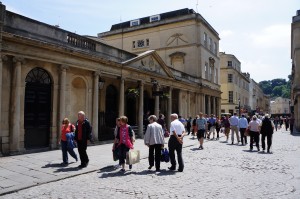Following our trip to Bath and Timothy Richards’s workshop we drove down to Bournemouth for a private workshop tour and a look at their end of year show. Having studied in Bournemouth for my degree I was already aware of what they have but felt showing Jim the facilities first hand would be of great befit to the constant refinement of our own workshop. Unlike our workshop at SED, the Bournemouth workshops cater for a wide range of courses and as a result are set over two large floors.
One aspect of the workshop design that would be great to incorporate into our own is the segregation of certain areas. This is a difficult task in SED due to our restricted space however certain changes are possible and some solutions could come from other institutions such as this. Of particular interest to reduce the amount of dust in the air we breathe we were interested to look at the sanding benches (below). These were in a purpose built room with enclosed extraction to reduce the spread of dust. Whilst we are limited in space, incorporating one of these benches into our workshop may be a possibility and we will consider implementing it within the next year.
Another separate department is the CAD-CAMÂ area which incorporates all CAD driven machinery away from the main woodwork shop space. As with the sanding room, it is unlikely we will be able to create such a space without expanding the workshop. This said, by simply arranging the machinery together and the materials they use effectively it is clear that this side of the AUB set up works very well. We will be making efforts to improve on material storage and availability over the summer.
One of the main draws for me to study in Bournemouth was the ability to collaborate with so many different courses. The AUB has facilities to cover Architecture, Interior Architecture, Animation, Costume Design, Model making, Make-up, Graphic Design, Film Studies, Photography and many more Arts based courses. Here are a few shots of our look at the End of Year show across the campus.
Find out more about the arts based courses at Bournemouth by clicking here.

